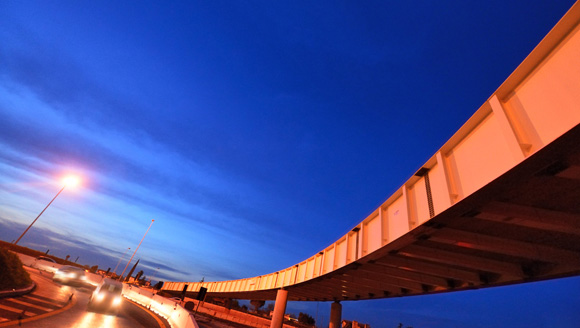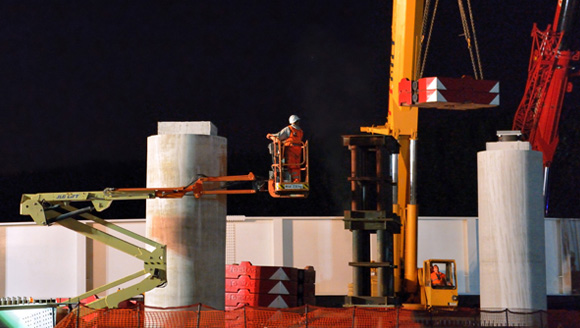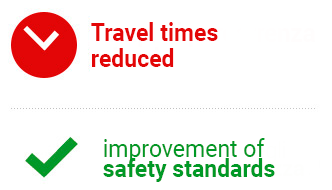Rome’s Complanari flank and extend one of the most important traffic junctions in the Italian capital, the Urban Penetration Section of the A24, familiarly renamed by Romans ” il tronchetto.”
It is the only urban highway that penetrates the historic heart of the Eternal City, crossing the tracks of Tiburtina station to end near the perimeter wall of the Verano Monumental Cemetery, at the junction with the Tangenziale Est. Every morning during rush hour, more than 30,000 cars pass through this artery in less than three hours. The traffic flow of commuters working in the center of the Italian capital and using the A24 and A25 highways is concentrated here.
Thanks to the convenient slip road connecting with the A1 Milan-Naples highway, a large proportion of vehicles coming from Florence and Naples and heading to the center of Rome also pass through here. Through the interconnection junction with the Grande Raccordo Anulare, this stretch of highway is also able to provide a quick connection with Rome’s two airports, Fiumicino and Ciampino. This is where 130,000 vehicles pass through every day.
In April 2014, Strada dei Parchi completed work on the Complanari to the A24, between the Viale P. Togliatti interchange and the Barriera di Roma Est. This effective and decisive upgrade, long overdue for years, has significantly improved access to the city of Rome, redistributing local and long-distance traffic over four wide dual carriageways.
The inclusion of the two coplanar roads, an additional carriageway in each direction, has increased the transport capacity in both directions (in and out of Rome), lowering travel times, promoting higher outflow speeds and a reduction in the accident rate, resulting in improved safety standards.

An innovative reconfiguration of the junction with the Grande Raccordo Anulare (the so-called “GRA junction”) has made it possible to fluidize traffic at the point of greatest concentration, where there has always been a massive flow, coming from and going to every area of the Capital.
Infrastructure improvement was achieved through:
- Flanking of two urban-type coplanar streets with a total extension of about 22 km
- Construction of new overpasses and ramps totaling 4 km
- Redevelopment of restraint systems and signage for about 14 km
- Installation of new safety barriers totaling 67 km
- Installation of sound-absorbing panels and new drainage and sound-absorbing pavement
- reconfiguration of the junction with the GRA with the insertion of two new macrobeams in place of the old and ineffective “cloverleaf” configuration
- construction of a third traffic lane, both in the direction of Rome and in the direction of L’Aquila, between the Portonaccio interchange and the Cervelletta viaduct.
The construction site
With a development of more than 14 km, the construction site for the Rome Complanari was among the most complex and important ones activated in Italy in the last 20 years and among the most delicate, due to its proximity to the most populous metropolitan area in Italy. The work took a record length of only 35 months instead of the planned 37 months and was almost all done off the highway roadway.

All activities that involved a high impact on traffic, with the highway roadway closed to traffic, were planned and executed during nighttime hours. During all phases of the work, two lanes in each direction of travel were guaranteed at all times.






